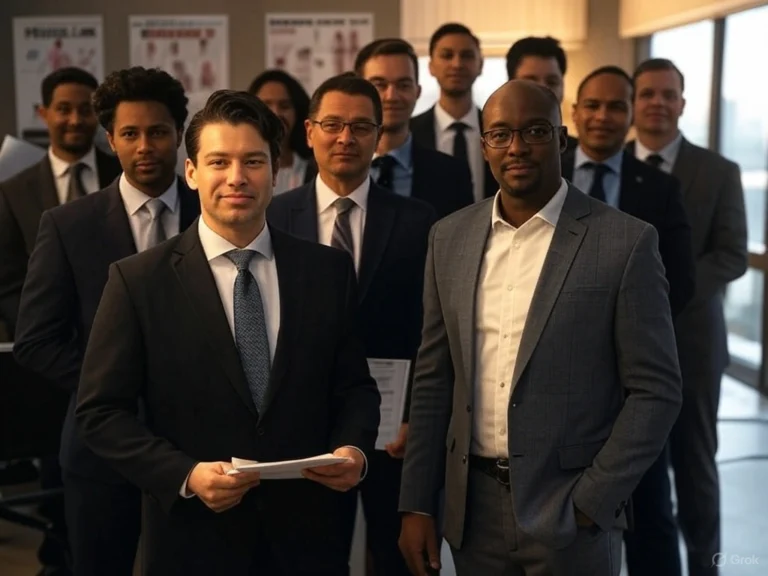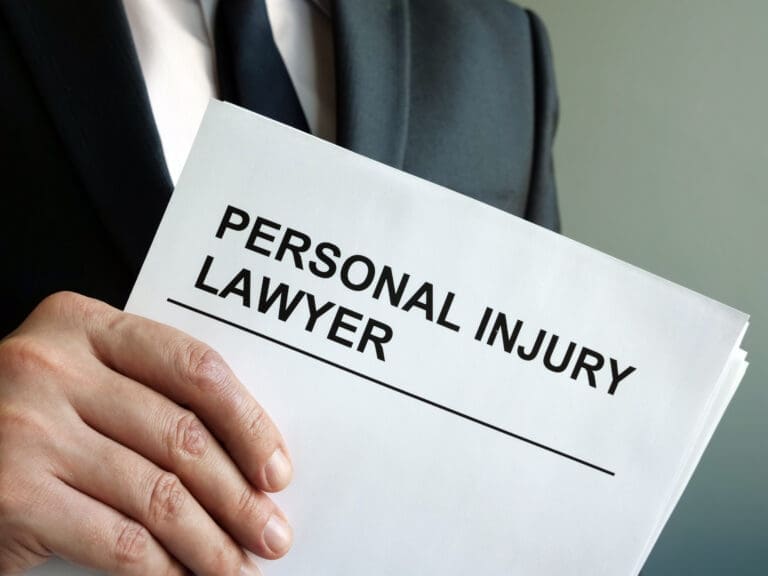
The fundamental transformation of due process requirements through technological advancement represents one of the most significant shifts in American jurisprudence in recent memory. As courts grapple with novel questions posed by digital evidence, artificial intelligence, and automated decision-making systems, the constitutional guarantees that have long protected individuals from arbitrary government action face unprecedented challenges. These technological developments are not merely altering procedural mechanics but are reshaping the very substance of what constitutes fair treatment under law.
The constitutional promise that no person shall be deprived of “life, liberty, or property, without due process of law” was formulated in an era of physical evidence, face-to-face confrontation, and human decision-making. Today’s digital landscape presents scenarios the Framers could never have envisioned: algorithmic risk assessments influencing bail decisions, facial recognition technology identifying suspects, and massive digital evidence collections that overwhelm traditional review processes. These innovations raise profound questions about notice, opportunity to be heard, and the fundamental fairness of proceedings that increasingly rely on complex technologies that few understand.
As courts and legislatures struggle to adapt centuries-old principles to modern technological realities, practitioners must navigate uncertain terrain where established precedents provide limited guidance. This uncertainty creates both challenges and opportunities for attorneys representing clients whose constitutional rights may be compromised by technological innovations that outpace legal frameworks. Understanding how technology is reshaping due process is no longer optional for legal professionals—it has become essential to effective advocacy in virtually every area of practice.
The Digital Transformation of Evidence Collection and Presentation
The proliferation of digital devices has fundamentally altered how evidence is collected, preserved, and presented in legal proceedings. Where physical evidence once dominated courtrooms, pruebas digitales now forms the backbone of many cases, from text messages in divorce proceedings to metadata in complex corporate litigation. This shift creates significant challenges for ensuring that due process protections remain robust in an increasingly digital environment.
The sheer volume of digital evidence presents perhaps the most immediate challenge to traditional due process frameworks. A single smartphone can contain thousands of messages, photos, location data points, and application records. Body-worn cameras generate hours of footage that must be reviewed. Corporate cases may involve millions of emails and documents. This volume threatens to overwhelm both prosecution and defense resources, potentially compromising the thorough review necessary for fair proceedings.
As noted in a recent article on Attorneys.Media addressing due process challenges in digital evidence collection, the “ephemeral nature of electronic data, its vulnerability to alteration, and the technical expertise required to properly preserve it create significant hurdles for ensuring that defendants receive the fair treatment our Constitution demands.” These technical complexities introduce new questions about authentication, chain of custody, and the reliability of evidence that traditional legal frameworks were not designed to address.
En cadena de custodia for digital evidence presents particular concerns. Unlike physical evidence that can be sealed in evidence bags with visible tamper indicators, digital evidence exists in a form that is inherently mutable. A single unlogged access to digital evidence could potentially alter crucial metadata without leaving obvious traces. Courts have increasingly recognized this vulnerability, with some jurisdictions developing specialized protocols for digital evidence handling to ensure its integrity throughout legal proceedings.
Authentication of digital evidence represents another significant hurdle. Federal Rule of Evidence 901 requires that evidence be authenticated by showing it is what its proponent claims, but applying this standard to digital information presents unique challenges. Screenshots can be altered, metadata can be manipulated, and context can be lost when digital communications are extracted from their original environments. These authentication challenges require courts to develop new standards and practitioners to acquire technical knowledge that was unnecessary in previous generations.
The “best evidence rule” further complicates matters in the digital context. When evidence exists in digital form, determining what constitutes an “original” becomes conceptually difficult. Is it the device on which data was created? A forensic image of that device? A printout of digital content? Courts have generally accepted forensically sound copies when proper procedures are followed, but this acceptance is not universal or unconditional, creating potential inconsistencies in how digital evidence is treated across jurisdictions.
Artificial Intelligence and Algorithmic Decision-Making
Perhaps no technological development poses greater challenges to traditional due process requirements than the increasing use of artificial intelligence and algorithmic systems in legal decision-making. From risk assessment tools influencing bail and sentencing decisions to AI-powered document review in discovery, these technologies are rapidly transforming how legal determinations are made. This transformation raises profound questions about transparency, accountability, and fairness in processes that increasingly rely on complex algorithms that few participants in the legal system fully understand.
The fundamental due process principles of notice and opportunity to be heard face particular strain when decisions are influenced by algorithmic systems. As noted in a recent scholarly paper on artificial intelligence and procedural due process, “If the government refused to disclose the reasons why it denied a person bail, public benefits, or immigration status, there would be substantial due process concerns. If the government delegates such tasks to an AI system, due process analysis does not change.” Yet in practice, many algorithmic systems operate as “black boxes,” providing outputs without transparent explanations of how those outputs were generated.
The opacity of many AI systems directly challenges the notice requirement of due process. When individuals cannot understand the factors that influenced decisions affecting their rights, they cannot effectively challenge those decisions or present relevant evidence. This opacity is particularly concerning when algorithms incorporate machine learning techniques that evolve over time based on the data they process, potentially developing biases or patterns that even their creators may not fully comprehend.
The COMPAS algorithm, used in some U.S. courts for risk assessment, illustrates these concerns. Research has shown that this algorithm incorrectly labels Black defendants as high-risk at nearly twice the rate of white defendants, raising serious questions about racial bias in automated decision-making. Yet defendants often have limited ability to challenge these assessments because the proprietary nature of the algorithm prevents full scrutiny of its methodology. This tension between commercial interests in protecting proprietary algorithms and due process requirements for transparency remains largely unresolved.
The solution may lie in what some scholars call “interpretable AI” or “glass box” systems that present results in ways that allow users to understand what factors were considered, what weight was given to each, and the strengths and limitations of the predictions made. Such systems would allow individuals to effectively challenge algorithmic determinations using available procedures, preserving the meaningful opportunity to be heard that due process requires. However, developing and implementing such interpretable systems presents technical challenges and potential trade-offs with accuracy that have yet to be fully resolved.
Remote Proceedings and Virtual Courts
The rapid adoption of remote proceedings and virtual courts represents another significant way technology is changing due process requirements. While remote technologies have been available for years, their widespread implementation was accelerated by necessity during recent public health emergencies. This shift has created both opportunities for increased access to justice and challenges to traditional due process protections that were designed with in-person proceedings in mind.
Remote proceedings offer potential benefits for access to justice by eliminating transportation barriers, reducing time away from work or childcare responsibilities, and potentially decreasing anxiety for some participants. These benefits may be particularly significant for self-represented litigants, who make up a large percentage of participants in many court systems. By making court appearances more accessible, remote technologies could potentially enhance the opportunity to be heard that lies at the heart of procedural due process.
However, virtual proceedings also present significant challenges to traditional due process protections. Technical issues can impede effective participation, particularly for individuals with limited access to reliable internet connections or appropriate devices. The digital divide means that the benefits of remote proceedings are not equally distributed, potentially creating new inequities in access to justice that fall along socioeconomic lines. These practical barriers can undermine the fundamental due process right to be heard, especially for disadvantaged litigants.
Credibility assessments, often crucial in legal proceedings, become more difficult in virtual environments. Judges may struggle to evaluate witnesses’ demeanor and truthfulness through a screen, potentially affecting the accuracy of factual findings. Similarly, attorneys may face challenges in effectively cross-examining witnesses in virtual settings, potentially compromising their ability to test adverse evidence. These limitations could affect the reliability of outcomes in ways that implicate due process concerns about the risk of erroneous deprivations.
The right to confront witnesses, particularly in criminal proceedings, faces special challenges in virtual environments. While courts have generally held that remote testimony can satisfy confrontation requirements in certain circumstances, questions remain about whether virtual confrontation provides the same protection against false accusations that in-person confrontation affords. The physical separation between the accused and accusers in virtual settings may diminish the psychological deterrent against false testimony that face-to-face confrontation traditionally provided.
The constitutional question is not whether remote proceedings are categorically permissible or impermissible, but rather what safeguards are necessary to ensure that they satisfy due process requirements. Courts must balance the benefits of technological innovation against the need to protect parties’ right to meaningful participation in proceedings affecting their fundamental rights. This balancing requires careful attention to both the technical aspects of remote systems and the procedural protections necessary to ensure fair treatment in virtual environments.
Digital Privacy and Due Process
The intersection of digital privacy and due process presents some of the most complex challenges in modern jurisprudence. As personal information increasingly exists in digital form—often held by third parties like service providers, social media companies, and cloud storage services—traditional frameworks for protecting privacy interests have become increasingly strained. This tension has significant implications for due process requirements in cases involving digital searches and surveillance.
The Fourth Amendment’s protection against unreasonable searches and seizures has traditionally provided a constitutional foundation for privacy rights in criminal investigations. However, applying these protections in the digital context has proven challenging. The third-party doctrine, which holds that individuals have no reasonable expectation of privacy in information voluntarily shared with third parties, potentially leaves vast amounts of digital information without constitutional protection. This doctrine, developed in an era of limited third-party information sharing, seems increasingly ill-suited to a world where virtually all digital activity involves third-party service providers.
Recent Supreme Court decisions have begun to recognize these challenges. In Carpenter v. United States, the Court held that the government generally needs a warrant to access cell phone location data, despite this information being held by third-party service providers. Chief Justice Roberts’s majority opinion recognized that cell phones and the services they provide are “such a pervasive and insistent part of daily life” that carrying one is indispensable to participation in modern society. This decision reflects an understanding that due process protections must evolve to address new forms of intrusion enabled by technology.
The collection and use of digital evidence also raises questions about proportionality and overbreadth. Where physical searches are naturally limited by physical constraints, digital searches potentially expose vast amounts of personal information beyond what is relevant to an investigation. A search of a smartphone for evidence of drug trafficking might expose intimate photos, private communications, medical information, and other sensitive data unrelated to the investigation. This potential for overbroad collection raises due process concerns about whether individuals receive adequate protection against unnecessary invasions of privacy.
The use of digital surveillance technologies like facial recognition, automated license plate readers, and predictive policing algorithms further complicates privacy and due process considerations. These technologies enable surveillance at a scale and with a persistence that was previously impossible, potentially altering the balance between government power and individual privacy. When such technologies are deployed without adequate transparency, oversight, or opportunities for challenge, they risk undermining the procedural protections that due process has traditionally provided against arbitrary government action.
Balancing legitimate law enforcement needs with privacy protections and due process requirements presents significant challenges for courts and legislators. As technology continues to evolve, legal frameworks must adapt to ensure that fundamental fairness remains at the center of our justice system. This adaptation requires careful consideration of how traditional due process principles apply in digital contexts and what additional protections may be necessary to preserve their effectiveness in an increasingly technological world.
Technological Due Process: Emerging Standards
As courts grapple with the challenges posed by technology to traditional due process frameworks, new standards and approaches are emerging that could collectively be termed “technological due process.” This evolving framework seeks to adapt longstanding constitutional principles to the realities of digital evidence, algorithmic decision-making, and automated systems while preserving the fundamental fairness that due process has always required.
El concepto de technological due process recognizes that while the core principles of notice, opportunity to be heard, and fundamental fairness remain constant, their application must evolve to address new challenges. This evolution requires courts to consider not only the procedural mechanics of how technology is used in legal proceedings but also the substantive impact of that technology on individuals’ ability to understand and challenge actions affecting their rights.
Transparency emerges as a central requirement of technological due process. When government actions rely on complex technologies, meaningful notice requires sufficient information about how those technologies operate to allow effective challenges. This transparency may require disclosure of the factors considered by algorithmic systems, the reliability rates of forensic technologies, and the limitations of automated processes. Without such transparency, the notice provided becomes merely formal rather than substantive, undermining the meaningful opportunity to be heard that due process requires.
Reliability testing represents another crucial aspect of technological due process. As one scholar notes, “Due process demands a greater opportunity to contest government decisions that raise greater reliability concerns. We need to know how reliable an AI system performs, under realistic conditions, to assess the risk of error.” This focus on reliability connects to the Mathews v. Eldridge balancing test, which considers the risk of erroneous deprivation through current procedures and the value of additional safeguards when determining what process is due in particular contexts.
Access to expertise becomes increasingly important as technology reshapes legal proceedings. When cases involve complex digital evidence or algorithmic systems, effective representation often requires specialized technical knowledge that many attorneys lack. This creates potential inequities in the justice system, as those with resources to obtain technical expertise may receive more effective representation than those without such resources. Some jurisdictions have begun addressing this concern by providing funding for expert assistance in cases involving complex technologies, recognizing that meaningful opportunity to be heard may require access to relevant expertise.
Human oversight of technological systems emerges as another key principle in technological due process. As Sir Geoffrey Vos, a senior judge in England and Wales, has advocated, there may be a legal right to have court decisions made by humans rather than machines. This position recognizes that while technology can assist human decision-makers, delegating final authority to automated systems risks undermining the deliberative judgment and moral reasoning that have traditionally characterized judicial decision-making.
The development of technological due process standards remains ongoing, with courts, legislators, and scholars continuing to refine approaches that balance technological innovation with constitutional protections. This evolution reflects the understanding that while technology changes, the fundamental principles of fairness and justice that underlie due process remain constant. The challenge lies in adapting these principles to new contexts while preserving their essential character and protective function.
Practical Implications for Legal Practitioners
For attorneys navigating this rapidly evolving landscape, the changing nature of due process requirements in technological contexts presents both challenges and opportunities. Effective advocacy increasingly requires understanding not only traditional legal principles but also the technological systems that now permeate legal proceedings. This understanding enables attorneys to identify potential due process violations and develop strategies for protecting clients’ rights in an increasingly digital legal environment.
Challenging digital evidence has become a crucial skill for modern litigators. Attorneys must be prepared to scrutinize every aspect of how digital evidence was collected, preserved, analyzed, and presented to identify potential due process violations or reliability concerns. This scrutiny should include examining the cadena de custodia for digital evidence, questioning the authentication methods used, and evaluating whether proper procedures were followed during collection and analysis. By identifying weaknesses in digital evidence handling, attorneys can potentially exclude unreliable evidence or undermine its credibility.
Expert testimony plays an increasingly important role in cases involving complex technologies. Qualified digital forensics experts can examine the methods used in collecting and analyzing evidence, identify procedural errors, and assess the reliability of forensic tools employed. Their testimony can help demystify complex technical issues for judges and juries, highlighting flaws, inconsistencies, and potential biases in technological evidence or systems. However, obtaining such expertise requires resources that may not be available to all clients, creating potential inequities that attorneys must work to address.
Cross-examination strategies must evolve to address technological evidence effectively. When questioning witnesses about digital evidence or automated systems, attorneys should focus on areas such as the procedures followed during collection, any deviations from standard protocols, the reliability and accuracy of tools used, and any discrepancies or anomalies in the data. Effective questioning should probe not only what the technology shows but also what it might miss or misinterpret, highlighting the limitations inherent in even the most sophisticated systems.
Pretrial motions take on increased importance in cases involving novel technologies. Motions in limine can seek to exclude unreliable technological evidence or require additional procedural protections before such evidence is admitted. Daubert challenges to expert testimony about technological systems can test whether the methods used are scientifically valid and properly applied. Discovery motions can seek access to underlying data, source code, or validation studies necessary to evaluate technological evidence effectively. These procedural tools allow attorneys to raise due process concerns before trial, potentially shaping how technological evidence is handled throughout the proceedings.
Staying informed about technological developments and their legal implications has become an ethical imperative for attorneys. The duty of competent representation increasingly includes understanding the technological aspects of clients’ cases sufficiently to provide effective advocacy. This understanding requires ongoing education about both technological developments and evolving legal standards for addressing them. Bar associations and continuing legal education providers have begun offering specialized training in digital evidence, AI, and other technological topics to help attorneys meet this growing need.
Balancing Innovation and Constitutional Protections
The tension between technological innovation and constitutional protections lies at the heart of how technology is changing due process requirements. This tension reflects broader societal questions about how to harness the benefits of technological advancement while preserving the fundamental rights and values that define our legal system. Resolving this tension requires careful consideration of both the opportunities that technology presents for improving legal processes and the risks it poses to traditional protections.
Technological innovation offers significant potential benefits for the legal system. Digital evidence can provide more reliable information than eyewitness testimony in many cases, potentially reducing wrongful convictions based on mistaken identifications. Remote proceedings can increase access to justice for individuals who face barriers to physical court attendance. Algorithmic tools, when properly designed and implemented, could potentially reduce human biases and inconsistencies in decision-making. These benefits suggest that embracing technological innovation could enhance rather than undermine the fairness that due process seeks to ensure.
However, uncritical adoption of technology without adequate safeguards risks eroding constitutional protections that have long served as bulwarks against arbitrary government action. As one court noted in rejecting unquestioning reliance on algorithmic risk assessment, “Algorithms are only as good as the data they analyze.” When these systems incorporate biased data or flawed methodologies, they risk perpetuating or even amplifying existing inequities in the justice system. Without appropriate transparency and opportunities for challenge, such systems could undermine rather than advance the cause of justice.
The solution lies not in rejecting technological innovation but in ensuring that it develops within a framework that preserves constitutional values. This framework should include robust transparency requirements for technological systems used in legal proceedings, meaningful opportunities to challenge technological evidence and automated decisions, and ongoing evaluation of how technology affects outcomes for different populations. By establishing these guardrails, courts and legislators can harness the benefits of technology while mitigating its potential risks to due process.
The development of such a framework requires input from diverse stakeholders, including legal professionals, technologists, civil rights advocates, and the communities most affected by legal systems. This collaborative approach can help ensure that technological innovation serves the interests of justice rather than merely the interests of efficiency or those with access to technological resources. By bringing diverse perspectives to bear on these questions, we can develop approaches that balance innovation with protection of fundamental rights.
The history of due process suggests that this balancing is possible. Constitutional protections have evolved throughout American history to address new challenges while preserving core principles. From the incorporation of the Bill of Rights against the states to the recognition of procedural protections in administrative proceedings, due process has demonstrated remarkable adaptability while maintaining its essential character. This history provides reason for optimism that due process can continue to evolve to address technological challenges while preserving its fundamental commitment to fairness and justice.
Conclusión
The transformation of due process requirements through technological advancement represents one of the most significant developments in modern jurisprudence. As digital evidence, artificial intelligence, and automated systems become increasingly central to legal proceedings, courts and practitioners must navigate complex questions about how traditional constitutional protections apply in these novel contexts. This navigation requires balancing the potential benefits of technological innovation with the enduring commitment to fundamental fairness that lies at the heart of due process.
The challenges are substantial. Digital evidence raises questions about authentication, chain of custody, and reliability that traditional legal frameworks were not designed to address. Algorithmic decision-making systems often operate with limited transparency, potentially undermining the notice and opportunity to be heard that due process requires. Remote proceedings create both opportunities for increased access to justice and risks to effective participation and credibility assessment. These challenges require thoughtful adaptation of longstanding principles to new technological realities.
Yet within these challenges lie opportunities to strengthen rather than weaken constitutional protections. By developing robust standards for technological due process, courts can ensure that innovation serves the interests of justice rather than undermining them. By requiring transparency, reliability testing, and meaningful opportunities for challenge, legal systems can harness the benefits of technology while preserving the fundamental fairness that due process has always demanded. This balanced approach recognizes that while the means of implementing due process may evolve with technology, its essential purpose—protecting individuals from arbitrary government action—remains constant.
As we navigate this evolving landscape, the words of Justice Frankfurter provide valuable guidance: “The history of liberty has largely been the history of observance of procedural safeguards.” In the digital age, preserving liberty requires adapting these safeguards to address new technological realities while maintaining their protective function. By approaching this adaptation with careful attention to both technological possibilities and constitutional principles, we can ensure that due process remains a vital protection for individual rights in an increasingly technological world.
Citations:
- Artificial Intelligence and Procedural Due Process
- The Impact of False Digital Evidence on the Justice System
- Criminal Defense Attorneys Discuss Challenges with Digital Evidence
- Technology in Courts: Development and Future Outlook
- AI, Due Process and Scientific Evidence in Legal Proceedings
- AI and Legal Systems: Bridging Resource Gaps
- Law Review Article on Digital Evidence and Due Process
- Digital Evidence and Due Process Protections
- E-Discovery Guide for Public Defenders Ensuring Due Process
- Procedural Due Process in Civil Cases Constitutional Analysis
- Scholarly Paper on Technology’s Impact on Due Process
- Research on Digital Evidence and Constitutional Protections
- Academic Study on AI in Legal Decision-Making
- Research on Technological Due Process Requirements
- Discussion on Preventing Job Elimination Due to Technology
- How Technology Advancement Affects Constitutional Rights
- Free Speech Protection for Modern Communication Technologies
- Solutions When Technology Replaces Human Jobs
- When Will Deepfakes Undermine Evidence Reliability
- Legal Responsibility When AI Breaks the Law
- Most Significant Supreme Court Decision from Modern Perspective
- Public Defenders Discuss Common Challenges with Evidence
- Student Falsely Accused of Using AI for Essay
- Problems with Black Box Software in Criminal Justice
- AI’s Impact on the Legal Profession in UK
- Constitutional Protections for Digital Rights Discussion
- Digital Forensics Investigation Report Analysis
- Public Misunderstanding of Due Process Rights
- Law Review Article on Technology and Due Process
- Digital Due Process Coalition Website
- SSRN Paper on Technology and Legal Procedures
- Technological Due Process Legal Analysis by Danielle Citron
- E-Discovery Guide for Public Defenders
- AI’s Complex Role in Criminal Law and Due Process
- Constitutional Protections in the Digital Age
- Digital Evidence and Fair Trial Rights at ICC
- Technology Transformation in the Court System
- Internet’s Impact on Due Process in 21st Century
- AI in Courts: Assessing Risks and Challenges
- Technology’s Potential to Strengthen Fourth Amendment Protections








